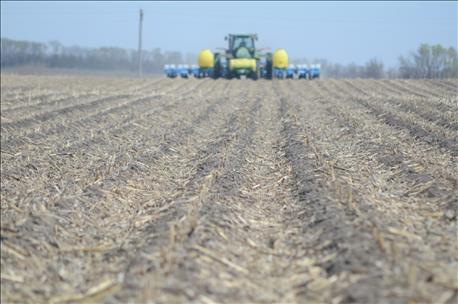
With dry field conditions and soil temperatures in the mid-to-upper 40s, planters are rolling this week. Around this time last year, Nebraska Extension educator Keith Glewen said something that has stuck with me – he referred to planting season as "one of the great wonders of the world that occurs every year in this country." Here's a quote from late April, 2015: "I'm just amazed at how everything falls together this time of year. You've got fertilizer people, crop protection people, seed people, and farmers all coming together. It's amazing the coordination that goes on across rural America," Glewen said last April.

It takes that kind of coordination to plant millions of football fields of corn and soybeans in the U.S. – especially considering the level of micromanaging it takes to operate a farming operation these days. I've spent the last week in farm fields in eastern Nebraska as farmers roll out their planters to plant corn and soybeans, what has become a kind of annual tradition for me, and it never ceases to amaze me the amount of commitment, knowledge, and planning it takes to put a crop in the ground.
That being said, this year is already shaping up to be a tough one for farmers, at least in terms of economics. That's especially the case in Nebraska, where high property taxes on top of low commodity prices mean margins are even tighter. This time of year, corn and soybean growers aren't pulling any punches in getting the most return per acre.
It was a hot topic of discussion at winter meetings this year – including the Fremont Corn Expo in early January, where presenters discussed the economics of growing a high-yielding corn crop.
Here, growers on a panel discussion addressed their methods for reaching higher yields economically. Time and again, planting was pointed out as a one of the critical factors in maintaining uniformity in the field throughout the season. Of course, with today's modern seed meters with improved singulation, seed tubes that can handle higher planting speeds, and depth/down force control to adjust for a variety of field conditions, some operator error can be mitigated.
However, several panelists noted the easiest thing to do – that doesn't cost a dollar – is pay close attention to planting speed, seed distribution, seeding depth, and seed-to-soil contact, hopefully leading to greater uniformity of emergence. As one of the panelists, John McNamara, agronomist at Wiles Brothers, Inc. in Plattsmouth, put it, "Planting is vitally important in all of this, because you've really got one shot to do it right."
About the Author(s)
You May Also Like






